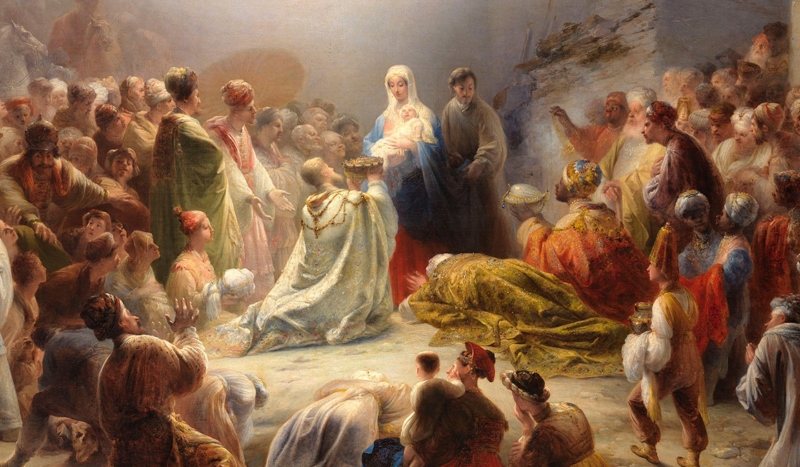
Adoration of the Magi / Domingos Sequeira
CV NEWS FEED // The Feast of the Epiphany marks the revelation of Jesus Christ to the world through the visit of the Magi, or the Three Wise Men, concluding the Christmas season with rich cultural customs and liturgical practices.
The term “Epiphany” originates from the Greek word epiphaneia, meaning “manifestation” or “appearance.” The celebration, one of the oldest Christian feasts, commemorates the visit of three pagan kings who followed a star to find the newborn King.
According to tradition, the wise men were named Melchior, Caspar, and Balthazar. They each brought symbolic gifts to the newborn King. These gifts of gold, frankincense, and myrrh symbolize the Christ Child’s kingship, divinity, and His eventual suffering and death.
The Epiphany, one of the oldest Christian feasts, is rooted in Scripture, particularly in the Gospel of Matthew, which recounts the journey of the Wise Men from the East to pay homage to Jesus. Their arrival signifies the recognition of Christ’s divinity by the Gentiles, highlighting God’s plan for universal salvation.
Historically, the Feast of the Epiphany has been celebrated in various ways across different cultures. In the early Church, the focus was on the baptism of Jesus, which is another significant event revealing His divine nature. However, by the 4th century, the emphasis began to shift toward the visit of the Magi. This change reflects the growing understanding of Jesus as the light of the world, illuminating the path for all humanity.
In the Catholic liturgical calendar, Epiphany is a Holy Day of Obligation. The liturgy includes special readings that highlight the theme of revelation, such as Isaiah 60:1-6, which speaks of nations coming to the light, and Ephesians 3:2-3, which discusses the mystery of Christ being revealed to the Gentiles.
The Epiphany Mass often features the chanting of the Te Deum, a hymn of praise, and the use of gold, frankincense, and myrrh.

